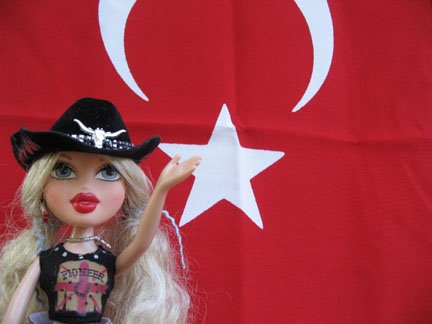
So, the other main reason I came to Turkey, besides curating the
Trade Show, was to see the 11th International Istanbul Biennial. That Istanbul can pull this off is quite a feat (the Southern Californian attempts at regular biennials have been a failure). I saw two of the three sites, in a warehouse and a decommissioned school.
Every biennial is different. Some, such as
Documenta, include big-name regulars on the international circuit. Some have big budgets, erecting buildings and large-scale sculpture/installation. Istanbul had neither of these this year. I recognized very few of the artists, most of whom were from the Balkans, Turkey, the Middle East and Asia. The artwork was temporary in nature: drawings on paper tacked to walls, cardboard sculpture, unframed photos. There were many videos resembling rough documentaries, without special effects or computer graphics.
The curation was extremely consistent—all about politics, strife, violence, poverty, economics, sexual and racial issues, etc. And it was generally bleak, although with a thread of black humor running through many of the works. The question asked was “How can we live now?” A friend commented to me that there weren’t a lot of answers, but many examples of how not to live.
In the next few posts, I’ll show you some specific artworks.
























